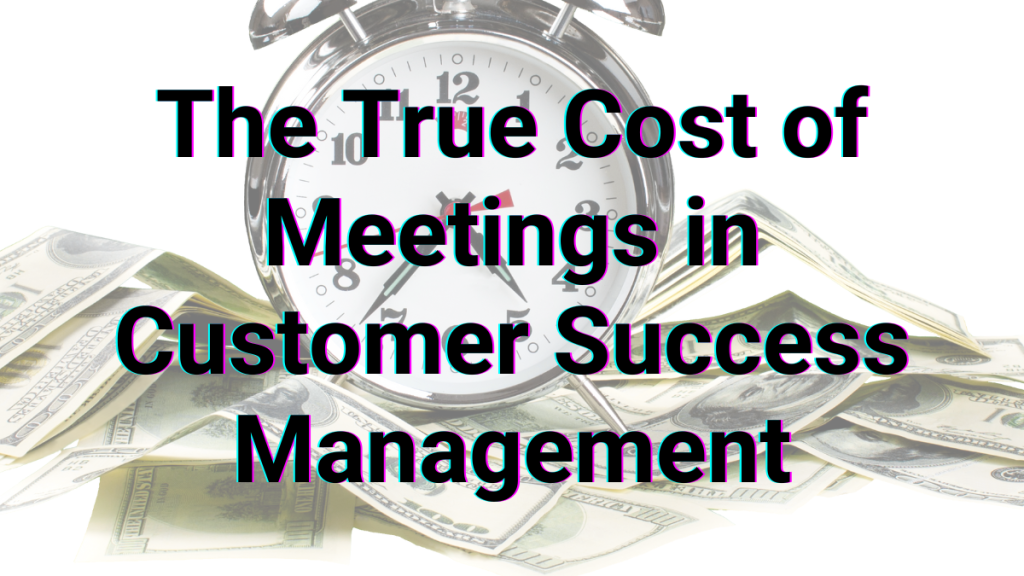
Meetings are the most expensive activity in Customer Success Management, yet we often overlook their true cost. If we fully understood the financial and strategic impact of meetings, we would likely conduct far fewer unproductive ones.
There are three key types of costs associated with meetings: Direct Cost, Opportunity Cost, and Prioritization Cost. Understanding these costs can help you make more informed decisions about when and how to schedule meetings, ultimately leading to more productive and impactful engagements with your customers.
1. Direct Cost
The most obvious cost is the Direct Cost—the actual expense of your CSMs’ and other contributors’ time spent on the call. This includes not just the duration of the meeting itself, but also the time required for preparation and follow-up. While many Customer Success organizations don’t calculate this, imagine if every meeting cost $200 (or more). Knowing this, you would undoubtedly ensure each meeting was as productive as possible.
It’s important to remember that these costs also exist for your customers. When they decline, cancel, or no-show, it’s often because they don’t perceive the meeting as valuable enough to justify the Direct Cost of attending.
2. Opportunity Cost
The second, often hidden, cost is Opportunity Cost. Every minute spent in a 1:1 meeting with a customer is time that cannot be spent with other customers, engaging customers asynchronously, creating self-service content, or focusing on higher-impact activities. This cost might not be easily quantifiable, but it is very real.
Again, this cost exists for your customers as well. They weigh the value of the meeting against other activities they could be doing, and if the perceived value doesn’t outweigh the Opportunity Cost, they may choose not to attend.
3. Prioritization Cost
The third cost, and perhaps the most insidious, is Prioritization Cost. Often, we spend significant time trying to save at-risk or bad-fit customers, while neglecting our good-fit and ideal customers who appear to be “doing fine.” This can lead to unexpected contraction and churn among those valuable customers—the very ones we should have been engaging more actively. Meanwhile, the bad-fit customers, who were likely to churn anyway, absorb our time and resources without yielding positive results.
Just as with the other costs, customers also experience Prioritization Costs. When they decline a meeting, it’s often because they don’t believe it’s worth diverting their focus from more pressing issues or strategic initiatives.
Conclusion
Understanding the true cost of meetings is essential for optimizing your Customer Success Management strategy. By being mindful of the Direct, Opportunity, and Prioritization Costs, you can make more informed decisions about when to hold meetings, whom to prioritize, and how to ensure that every meeting delivers maximum value for both you and your customers.
When you go to schedule your next meeting, keep these costs in mind. This awareness can help you minimize unproductive meetings and focus on creating more powerful, impactful engagements that drive meaningful outcomes for your customers.
